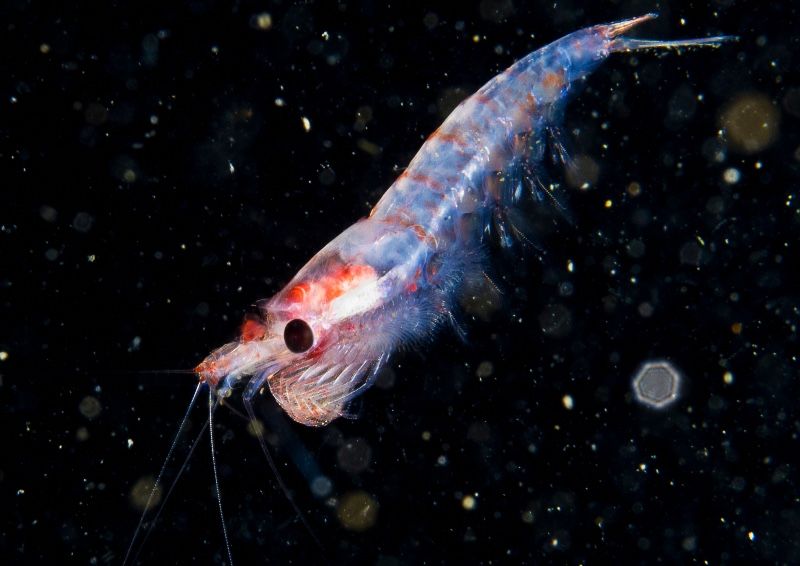What Do Humpback Whales Eat? The population of Humpback Whales found in Australian waters have a love of Antarctic Krill Euphausia superba which is of course found in the pristine waters of Antarctica. Antarctic krill grow to six centimetres and weigh in at one gram which is minuscule in comparison to the size of the whales who consume them however the krill have an excellent ability to swarm. During the summer months krill productivity is at its peak and these krill swarms can explode in numbers and are known to be the largest aggregations of animal life on this planet. The swarms can easily stretch over twenty kilometres and a swarm of this size would contain at least thirty trillion individuals. Truely phenomenal numbers and it is easy to see why thousands of whales over many different species flood south to Antartica during the warmer months to feast on krill in preparation for northern migrations during the winter months.
Krill is the mainstay of a Humpback Whales diet and provides all the nutrition they need to thrive. Thousands of kilograms are consumed each day during the peak of the Humpbacks feeding season in summertime. Humpback Whales only have a small oesophagus which is approximately the size of a grapefruit so the species of food they are able to target has to be very specific. Krill fits the bill perfectly and can be easily found in gargantuan quantities making foraging and feeding on this wonderful food source extremely convenient for the Humpback Whales.
Humpback Whales will feast on krill during the summer months in Antarctica and as they begin their migration along the Australian coastline the urge to feed is replaced with hormones for breeding and raising newborn calves. Adult whales will not have another meal until their return back to Antarctica four to six months later, an incredible feat of energy conservation.
During our tours we have witnessed on rare occasions juvenile Humpback Whales foraging on small schools of fish including pilchards. Foraging during the migration months of winter and spring is occasionally sighted on the east coast of Australia but rarely sighted on the west coast of Australia. It is mostly seen amongst the sub-adults of the population who are not joining in with the breeding season so have more time to wander during the migration months.
Feeding during the migration is opportunistic and a behaviour we will continue to monitor during future seasons to see if this opportunistic feeding increases which could be an indication of a shift and further increase in the populations numbers. The question of What Do Humpback Whales Eat? is a fantastic one that always ends in the amazing knowledge of learning how one of the worlds smallest creatures sustains one of the largest.







